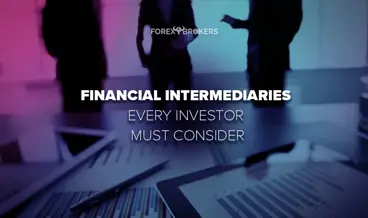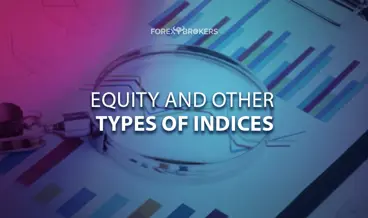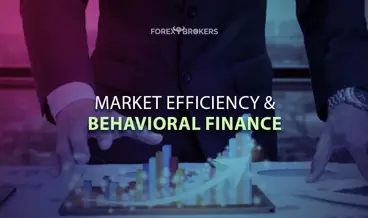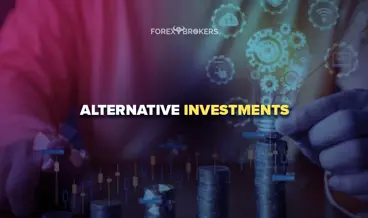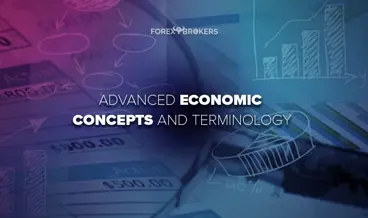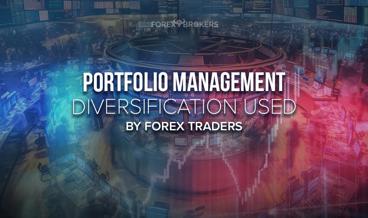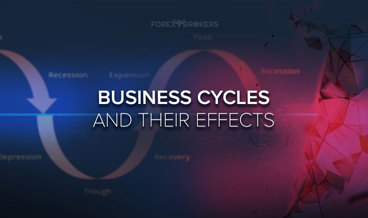A big part of trading and investing deals with understanding economic concepts. However, not all traders or investors are economists or had economic studies in the past. Therefore, this article explains some economic concepts to everyday traders and investors.
Two types of traders and investors exist – technical and fundamental ones. Technical traders study past prices to forecast future ones. As such, they use trading theories, such as the Elliott Waves Theory presented in this trading academy, or technical indicators and market geometry concepts.
However, fundamental traders mainly interpret economic data in different countries and regions. Next, they act on their findings. It is said that a country's currency reflects its economic strength or weakness. But to know where the economy is going next, traders and investors need to read economic data, surveys, and reports and interpret them.
This trading academy is built in such a way that it presents both trading and investing. The two concepts, while similar in many aspects, have some particularities. For this reason, the terminology explained in this article refers to both trading and investing.
Another feature of this trading academy is that it is built from basic concepts to advanced ones. By the time the reader covers all the topics and examples in the different sections, the terminology explained here is of great help.
Finally, some concepts may have been covered partially in previous articles. Some others may be new to the reader but of use when interpreting financial markets.
Interest Rates
Interest rates reflect the cost of borrowing in an economy. Also, they show how much savers get. Central banks set the interest rate level to stimulate economic activity. As such, in contractionary times, central banks lower the interest rates to stimulate banks into offering loans to businesses and households. Just the opposite happens during economic expansion.
Fixed Income
Fixed income is an investment where the borrower or the issuer makes payments at a fixed schedule. Bonds are the best example of a fixed-income investment, as are dividends. A bond has a price and a yield, which are inversely correlated. That is, when the price of a bond rises, the yield declines, and the other way around. Therefore, investors in fixed income depend on the future path of interest rates, as interest rates severely impact the price of a bond.
Portfolio Management
A portfolio approach to investment has many benefits compared to a single investment. A portfolio approach is important to investors because of portfolio diversification benefits. Portfolio management evolved in time as the needs of investors expanded. Portfolios reduce risk as they generally offer the same expected return but with lower volatility.
ETF
An ETF or an Exchange Traded Fund is a fund that trades on exchanges. It typically follows an index or a market sector and represents an alternative to direct stock ownership. An ETF provides various benefits to investors, such as diversification, tax efficiency, trading flexibility, and lower costs. As a result, ETFs are extremely popular among investors, and they allow a trader to short an asset or an asset class easily.
Cash Flow Statement
The cash flow statement provides information about a company's cash flow position over a specified period. The cash flow statement is important as it focuses on a company's liquidity needs and is different from the income statement. It reflects cash receipts when collected and not when the revenues were earned. It shows three types of activities – operating, investing, and financing – and companies may present them directly or indirectly.
Cyclical Stock
A cyclical stock is a company that sees its sales and profits expanding with the business cycle. The business cycle theory says that an economy advances through a series of ups and downs alongside a rising trend.
During economic expansion, the growth and boom periods benefit a cyclical company. On the other hand, during economic contraction or recession, a cyclical stock declines. Examples of cyclical companies are restaurants, airlines, and automobile manufacturers.
Income Statement
The income statement presents the financial results of a company over a period of time. It ends with net income or the bottom line and may be presented in a multi-step or single-step format. When companies choose to present it in a multi-step format, it means that the income statement shows a gross profit subtotal.
Balance Sheet
The balance sheet is one of the four financial statements a publicly listed company must report. It shows a company's financial position at one point, representing a snapshot of its financial strength. The balance sheet shows the company's assets and the claims on those assets, and it is also called the statement of financial position or the statement of financial condition.
Annual Report
The annual report is a document presenting a company's activity in the previous year. It is not a mandatory document required by the Security and Exchange Committee. Still, it is a source of information for investors doing due diligence before buying shares in a company.
1% Risk Rule
The 1% risk rule refers to the risk taken as a percentage of the trading account or portfolio. In other words, any given trade should not risk more than 1%, and this is attainable by adjusting the traded volume to the distance needed until the market reaches the stop-loss order. It is one of the most important money management rules, especially if used with a risk-reward ratio bigger than 1:2.
Contract for Difference
A contract for difference is a derivative product. Contracts for difference or CFDs are widely used in Europe, the United Kingdom, and Asia, especially in the currency market. A contract for difference makes it easier for a trader to go long or short and differs from options and futures because they do not have an expiration date.
Leverage
Leverage refers to the use of borrowed funds when trading. The aim is to increase a trading position beyond the cash position in a trading account. This way, the trader stands to benefit if the market moves in the right direction. However, the same is valid when the market does the opposite. Therefore, leverage increases risk and was subject to regulation in advanced economies.
Quantitative Easing
Quantitative Easing, or QE, is the process of central banks buying government bonds. It was first introduced by the Federal Reserve of the United States in the aftermath of the 2008-2009 Great Financial Crisis. Until then, central banks used to lower the interest rates to the lower boundary to counter an economic recession or a crisis. But that was not enough, and QE became the first unconventional tool used. As a result, other central banks in the world quickly embraced it.
Quantitative Tightening
Quantitative Tightening, or QT, is the inverse process of QE. Central banks sell government bonds this time, and the balance sheet shrinks. While QE is an expansionary monetary policy tool, QT is contractionary. In other words, it contributes to the tightening of financial conditions, together with rising interest rates.
Forward Contracts
A forward contract is an over-the-counter derivative contract. It is a forward commitment between two parties – the buyer and the seller. The first one commits to purchase the underlying asset from the seller at a future date. An important part of a forward contract is that the price is fixed at the moment the contract is signed.
Futures Contracts
Futures contracts resemble forward contracts, but they trade on exchanges. In other words, a future contract is a standardized derivative contract, and the future exchange provides a credit guarantee via its clearinghouse. The clearinghouse provides daily settlements and the buyer and the seller mark a loss or a win.
Swaps
Swaps are over-the-counter derivative contracts. The main difference between forward contracts and swaps is that the underlying asset in a swap contract is a series of cash flows. Multiple types of swaps exist, the most common one being the fixed-for-floating interest rate swap.
Options
Options are contingent claims. They give the buyer the right, but not the obligation, to buy or sell the underlying asset at expiration. Options are wildly used derivative products because they allow for a cheaper way to participate in financial markets. Traders buy a call option when they believe that the underlying asset's price will be higher at the expiration and a put option when they believe the price will be lower. An option can be exercised before or at expiration. If exercised before, it is an American-style option. European-style options can only be exercised at expiration.
Arbitrageur
An arbitrageur is a trader engaged in arbitrage. Arbitrage refers to the simultaneous purchase of an undervalued asset and the sale of an overvalued but equivalent one. The price differential results in a riskless profit. Arbitrageurs increase market efficiency as they take advantage of market inefficiencies in a risk-free manner.
Initial Public Offering
An initial public offering, or IPO, is the process of a company going public. By going public, a company sells part or all its shares to outside investors intending to raise capital for expansion, launching new products, etc. IPOs are very popular, especially in the United States. Because the US equity market is the largest one in the world, many foreign companies willing to access American capital list their shares on the major US stock exchanges.
Long Position
Traders take a long position when they buy a security and expect the price of it to move to the upside.
Taking a long position is a bullish expression in which the trader believes the market is increasing. A long trade can be taken at the market, meaning that the trader uses the ask price when buying or using a buy-stop pending order. In the latter case, the long trade is initiated from a higher level than the current market price. A long position can also be initiated by using a buy limit pending order.
Short Position
A short position signals a trader's belief that the market will decline. By selling a market short, the trader is bearish and believes the price will decrease. Should this happen, the trader intends to cover the short by closing the position at a lower level. The difference represents the gross profit on the short trade. Shorting is possible at the market or by using sell-stop or sell-limit pending orders.
Leveraged Positions
A leveraged position uses borrowed funds beyond the cash available to trade. The FX market is typically leveraged, meaning that all positions are leveraged. The norm is 1:30, but the leverage size may differ depending on the geographical location and the financial jurisdiction. In the stock market, a trader may borrow funds on margin from the broker to purchase more stocks of a particular company. The trader pays interest on the borrowed funds and stands to make a profit if the stock price rises.
If the stock price declines and the cash position is insufficient to sustain the actual market position, the broker will issue a margin call asking for more funds to be deposited. If not, the broker sells the shares and recovers the money.
Time-Weighted Return
Time-weighted return measures the performance of the investment since inception. One particularity of the time-weighted return measure is that it is not affected by cash inflows or outflows. Also, amounts invested over different periods do not affect the return.
Absolute Gain
Absolute gain is the total return of the investment relative to the total deposits. Calculated as a percentage of total deposits, it is affected by cash inflows and outflows. For this reason, it is considered an inaccurate return measure; thus, the time-weighted return measure is preferred.
Sector Indexes
Sector indexes track different economic sectors. A sector index may be regional, national, or global and has an important role in performance analysis. Sectors are affected by the business cycle; therefore, investment managers use sector indexes to increase or decrease exposure to different sectors depending on how the economy performs.
Style Indexes
Style indexes reflect the different investing styles of investors and are classified based on growth, value, market capitalization, etc. They are a useful tool to interpret the market based on various criteria and are extensively used by small-cap investors, large-cap investors, mid-cap investors, as well as growth and value investors.
Hedge Funds Indexes
Hedge fund indexes were built to reflect the returns of hedge funds. They are typically equal weighted. The HFRX Global Hedge Fund Index is a good example. It is an asset-weighted index based on the asset distribution within the hedge fund industry.
REITs
A REIT or a Real Estate Investment Trust is a company that operates in the real estate market. REITs are of different types, such as equity, mortgage, and hybrid REIT and generate income for shareholders. The main condition for a company to operate as a REIT is to pay a minimum of 90% of taxable income as dividends to shareholders. Another condition is to invest a minimum of 75% of assets in real estate. The bulk of a REIT's income comes from rent, interest on mortgages, and so on.
Short Selling
Short selling refers to a position taken by a trader or investor in the market with the belief that the price of an asset will decline. For example, consider the currency market, where the trader speculates on the future exchange rate of a currency pair. If the trader believes that the EUR/USD exchange rate will decline in the future, the trader might open a short position. If the market indeed declines, the trader will square the position to take the profit. Any market can be sold short, especially using derivatives.
Short Squeeze
A short squeeze happens when too many traders bet on the short side of the market (i.e., that the market will decline). This may happen for various reasons, such as the central bank hiking the interest rates. The more crowded the short trade is, the bigger the chances are that the market will experience a short squeeze or a rally in the opposite direction. As the market fails to drop, it will begin triggering stops and traders are forced to close the shorts, leading to a market rally or a short squeeze.
Value Stock
A company's share price should trade at its intrinsic value. However, many times, the market does not reflect the real intrinsic price. Therefore, investors do their own research and if they believe that the share price is below the intrinsic value, an opportunity to buy arises. It is said that the company is undervalued.
Defensive Stock
Defensive stocks diverge from the business cycle during times of economic recession. They perform consistently in such times because there is a constant demand for their products. Utilities and healthcare companies are good examples of defensive stocks.
Bond Indenture
A bond indenture is a legal contract describing the bond. It contains all the bond features, such as the covenants, the source of the repayment proceeds, the interest or coupon rate, the principal value, the interest payment dates, the maturity date, and so on.
Enterprise Value
The enterprise value, or EV, measures a company's actual business value. To calculate it, investors sum up the company's market capitalization and total debt and then deduct the cash and cash equivalents positions. It shows how much a potential buyer will pay for the business if it pays the current share market price.
Callable Bonds
A callable bond has an embedded option – the call provision. This provision allows the issuer to call or redeem all or some of the issued bonds before their maturity date. The main reason for an issuer to call the bonds is to protect against a future decline in interest rates. Imagine that the central bank provides forward guidance and that the interest rates are expected to drop from 2% to 1% over the course of one year.
The issuer of a callable bond has the right to call the bond and replace the bond issue with a cheaper one. Hence, callable bonds offer protection to the bond issuer.
Putable Bonds
While callable bonds offer protection to the issuer, putable bonds offer protection to the bondholder. If interest rates rise, the price of a bond falls. Therefore, the bondholder of a putable bond may place the bonds back to the issuer and use the proceeds to buy bonds that now offer a higher yield.
Securitization
Securitization is the process of transferring the ownership of assets, such as loans, to a special legal entity. Then, the special legal entity issues securities known as asset-backed securities. Thus, securitization allows investors access to less liquid assets, which is beneficial to economies and financial markets.
Residential Mortgage Loans
A residential mortgage loan is a loan backed by collateral to buy a real estate property. If the borrower defaults, the lender has the right to foreclose the property by taking possession and selling it to recover funds.
Credit Risk
Credit risk is also known as default risk. The risk is that the debtor fails to make a payment.
Convertible Bonds
A convertible bond has both equity and debt features. The holder of a convertible bond may exchange it for a number of common shares. The conversion price and the conversion ratio play a key role in the transaction. The first is the price per share to use in the calculation, and the second is the number of common shares a bond can be converted into.
Accounting Profit
Accounting profit is also called pretax income or income before taxes. Effectively, it represents income as reported on the income statement before taxes.
Aggregate Demand
Aggregate demand is an economic concept referring to the quantity of goods and services that different entities, such as households, governments, companies, or foreign customers, want to buy at any given price level.
Deflation
Deflation refers to the situation when inflation drops into negative territory. Deflation is difficult to combat by central banks. It is one of the reasons why central banks have an inflation target of around 2%. When deflation occurs, a vicious circle starts with consumers postponing a purchase due to the constant price fall. If consumer spending declines, the economy has a hard time expanding.
Disinflation
Disinflation refers to the process when inflation keeps rising, albeit at a slower pace. Disinflation differs from deflation in the sense that deflation means negative inflation.
Headline Inflation
Headline inflation is calculated based on the prices of all goods and services in an economy. However, it is rarely the favored inflation measure for central banks.
Core Inflation
Core inflation calculates the inflation rate based on the prices of all goods and services in an economy, less energy, food, and transportation. The three categories are considered to be volatile and thus, the core inflation data is preferred by central banks in their goal of maintaining price stability.
Penny Stock
Penny stocks are stocks that trade below $5/share. They are highly volatile and subject to "pump and dump" strategies. Also, they are highly speculative as they are attractive due to their low share price. Biotech companies are known as belonging to this category.
Add-On Rates
An add-on rate is a bond's equivalent yield basis. Many financial products are quoted on an add-on rate basis, such as bank certificates of deposit, indexes (e.g., Euribor), or repos.
Activity Ratios
Activity ratios show how a company manages various activities. Examples of activity ratios are inventory turnover, days of inventory on hand, receivables turnover, days of sales outstanding, payables turnover, number of days of payables and working capital turnover.
Liquidity Ratios
Liquidity ratios show a company's ability to meet its short-term obligations. The most used liquidity ratios are the current, quick, cash, and defensive interval ratios. Besides that, investors also use the defensive interval ratio and the cash conversion cycle.
Solvency Ratios
If the liquidity ratios show the company's ability to meet short-term obligations, solvency ratios do the same for long-term obligations. Common solvency ratios are debt-to-assets, debt-to-capital, debt-to-equity, debt-to-EBITDA, financial leverage, fixed charge coverage and interest coverage.
Profitability Ratios
Profitability ratios offer an idea about a company's profitability. They can be grouped into return on sales (gross profit margin, operating profit margin, pretax margin, net profit margin) and return on investment.
Backwardation
Backwardation is a term used in the futures market, reflecting a certain market condition. More precisely, when backwardation occurs, the spot price is higher than the futures price. Moreover, during backwardation, the convenience yield is high and the forward yield is downward slopping.
Contango
Contango is the opposite of backwardation. Under such conditions, the spot price (i.e., the current market price) is lower than the futures price. Also, there is no convenience yield and the forward curve is upward slopping.
Barter
Barter occurs when entities such as households or governments pay for goods and services with another good or service. Barter does not exist anymore except in special circumstances, as money provides everything barter does and more.
Spread Betting
Spread betting is a derivative product used for speculation in the financial markets. Like any derivative, spread betting takes its value from the underlying asset's value. The underlying may be a currency pair, an index, a share, or a commodity, to name a few. Spread betting has many advantages over regular trading, especially when it comes to capital gains taxes.
Central Bank Funds Market
The central bank funds market is a market where commercial banks sitting on excess reserves lend money to other banks in need of liquidity.
Continuation Pattern
A continuation pattern is a technical analysis pattern that forms before the market makes another leg higher. Continuation patterns are consolidation areas that may take the form of a triangle (e.g., ascending and descending triangles, pennants), flag (e.g., bullish and bearish flags), or just one candlestick (e.g., Doji candlestick). The most common continuation patterns are triangles, which form ahead of important economic events, such as the Non-Farm Payrolls report in the United States or a central bank interest rate decision.
Reversal Pattern
A reversal pattern appears at the end of bullish and bearish trends. They are contrarian technical analysis patterns and, thus, are riskier to trade than continuation patterns. Examples of reversal patterns are the head and shoulders, rising and falling wedges, morning and evening stars, piercings, bullish and bearish engulfing, and triangles that act as a reversal pattern. The most common reversal pattern is a triangle, which typically appears at the end of complex corrections.
However, due to their simplicity, traders find it easier to trade reversal patterns belonging to Japanese candlesticks patterns.
Credit Default Swap
A credit default swap or a CDS is a credit derivative. One party buys credit protection against a third party, and the seller makes payments only if a credit event occurs.
Fiat Money
After the Bretton Woods agreement disappeared, money issued by central banks was not backed by commodities anymore. Fiat money is such money – coin and paper currencies.
Federal Funds Rate
The Federal funds rate is the rate set by the Federal Reserve of the United States. It is the US interbank lending rate on overnight borrowings of reserves, and it is the most important rate in financial markets. When the Federal Reserve changes the interest rate, other central banks follow. Therefore, correctly anticipating the future path of the federal funds rate is key to successful investing and trading.
Gross Profit Margin
The gross profit margin is the ratio between a company's gross profit and its revenue. It is used to compare different companies' profitability. The gross profit represents the difference between how much a company sells and the cost of those sales. Naturally, the higher the gross profit and the gross profit margin, the better.
Inflation-Linked Bonds
Inflation-linked bonds are bonds with an inflation adjustment that only applies to interest payments. They provide protection against inflation and are typically issued by corporations and commercial banks but not by governments.
Exchange Rate
An exchange rate shows the value of one currency in terms of another. Examples of such rates are EUR/USD, USD/JPY, and GBP/CHF. An exchange rate can be direct or indirect. A direct exchange rate has the domestic currency as the price currency and the foreign currency as the base currency. An indirect quote is the opposite of a direct quote.
Tariffs
Tariffs are taxes on imported goods. They reduce demand for imported goods because such goods suddenly become more expensive. Governments impose tariffs for various reasons, such as to reduce the trade deficit or to protect domestic producers.
The Transmission Mechanism
The monetary transmission mechanism refers to the process of an interest rate change impacting the economy. A lag exists because the transmission mechanism is complex. It all starts with the change in the official rate. Such a change influences market rates, asset prices, exchange rates, consumer confidence, and expectations. Together, they impact the domestic and internal demand and the overall level of the prices of goods and services (i.e., inflation).
Central Bank Independence
Central bank independence aims at separating control from the political influence of governments. Various degrees of independence exist. A central bank may be both operationally and target-independent. In other cases, the government mandates the central bank to maintain a certain level of price stability.
Action Lag
Monetary policy decisions act with a lag, a so-called action lag. Effectively, it represents the delay from policy decisions until implementation. It is said that a change in interest rates needs about six months to be transmitted in the economy. Therefore, the transmission mechanism takes time, and a change in interest rates or monetary policy does not have an immediate impact. However, the FX market is forward-looking and reacts on the spot to monetary policy changes.
Relative Strength Index
The Relative Strength Index or the RSI, is a technical analysis indicator. An oscillator appears at the bottom of a chart, showing overbought and oversold levels. For example, the standard interpretation of the RSI is that a market is in the overbought territory if the oscillator shows values above 70 and oversold if it reaches values below 30. Technical traders also look at divergences between the market price and the RSI as indications of a possible market reversal.
Pending Orders
Pending orders are used for traders to enter the market from different levels other than the current market price. They reveal the existence of a trading plan and are a sign of a sound money management system. Different types of pending orders exist, such as buy limit (i.e., the trader wants to buy from higher levels), buy stop (i.e., buying takes place from lower levels), sell limit (i.e., selling occurs only if the market advances to a certain level), and sell stop (i.e., selling happens if the market drops to a certain level).


